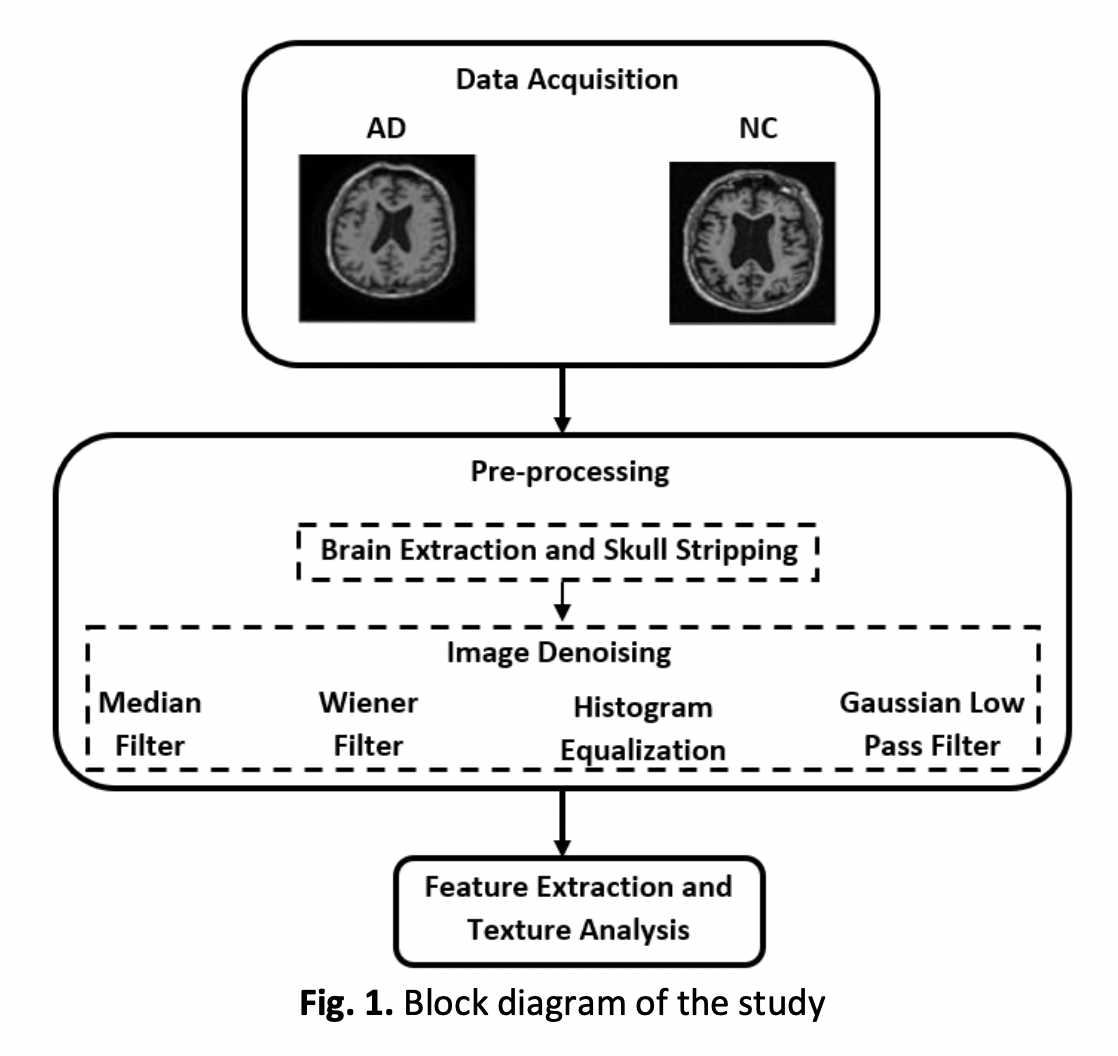Preliminary Analysis on the Effect of Different Denoising Techniques towards Texture Features of MRI Images of Alzheimer’s Disease
DOI:
https://doi.org/10.37934/araset.31.2.234244Keywords:
Alzheimer’s Disease, MRI, image denoising, feature extraction, GLCMAbstract
Early detection of Alzheimer’s disease (AD) has become one of the major research topics nowadays. The utilization of the computerized system may help medical experts to better understand and analyse the magnetic resonance imaging (MRI) images of AD patients for early detection. One of the commonly steps taken for the analysis of the image is image denoising using certain filters. However, finding shows that previous researchers use different approaches. This study aims to analyse the effect of different denoising techniques towards detection of Alzheimer’s disease. Data of two different groups (AD patients and Normal Control) were collected from Alzheimer's Disease Neuroimaging Initiative (ADNI). Then brain extraction and skull stripping were performed. Several image denoising techniques were implemented for both groups namely median filter, Wiener filter, histogram equalization filter and Gaussian low pass filter. After that, all images underwent texture feature extraction process and analysis were made to see the effect of those denoising techniques towards the features of Gray-Level Co-occurrence Matrix (GLCM) extracted which are the contract, correlation, energy and homogeneity features. The result shows that the use of mentioned denoising filters do not give effect to the extracted features. All values of contrast, correlation, energy and homogeneity cannot clearly distinguish between AD and NC groups. Without any filters on the other hand, contrast feature gives the best output in distinguishing between AD and NC groups with the normalized value of 0.1. The result from this study may help in thorough investigation of other features or hybrid features that could be used for the purpose of detection and classification of AD.





























